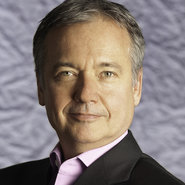By Beau Fraser
During the Occupy Movement, the idea of the “1 percent” got a lot of airplay, and opinions about this group flew fast and furious through the media. Lots of people wondered who was actually in the 1 percent. Some were surprised to find they were included, and many who had thought they were reasonably affluent found themselves on the poor side of town.
It turns out a hundred thousand a year does not put you anywhere near the top tier – you are still just middle-class.
Seems we are all talking more about affluence and wealth these days, but do we have a good handle on what those terms mean, and what it takes to be truly affluent?
On the money
Ask Mendelsohn, and the market researcher will tell you the affluent make $100,000-plus a year, the ultra-affluent earn $250,000-plus and the wealthy weigh in at $500,000-plus. Sounds about right? Think again.
If you ask the U.S. Department of Commerce, they break the population into quintiles.
According to the Census, the top 20 percent of U.S. households make an average of $92,000 per year – close to Mendelsohn’s cut-off for basic affluence.
With that income you can buy a nice place in Tulsa or Tuscaloosa, but you would be hard-pressed to afford even a studio in Tribeca in New York.
President Obama talked about asking the rich to pay their fair share, and wanted to raise the tax rate on households making $250,000-plus (Mendelsohn’s “ultra-affluent”). That is about 1.5 percent of the population.
To belong to the exalted 1 percent, you need an income of more than $350,000.
For most Americans, that sounds like a lot. It should, because it is nearly six times the average family’s income of $62,000. Which is why so many were willing, in straightened times, to vilify the 1 percent and jump on the tax-the-rich bandwagon.
But does $350,000, or even Mendelsohn’s $500,000-plus really qualify as rich?
Making the point
In Tulsa and Tuscaloosa it might buy a lot, but in the top major metropolitan areas, where most of the 1 percent live, it makes you upper middle class.
To be rich, you need to be in the 0.1 percent. While membership in the 1 percent starts around $350,000 a year, to be in the 0.1 percent you need more than $1.5 million – three times Mendelsohn’s “wealthy” earnings.
Look closely at these two groups and you can see how different they are.
The 1 percent is made up of your garden variety professionals and managers – lawyers, doctors, middle-managers, small business owners – people who use their brains to make a good living, have nice houses in nice neighborhoods, take their kids away for a summer vacation and ski weekends in the winter.
These consumers might even have beach or country house. Most of us in marketing, if not already there, aspire to that life.
The 0.1 percent is in a completely different league. They hire people like us to help grow their companies, protect them from lawsuits, cure their kids. They own several homes, and each is the kind we see only see in magazines – in buildings with spectacular views, on the water, in gated communities.
When they want to ski they do not drive up to Killington with the kids, they take a private jet to their ski house in Vail or Aspen. The 1 percent still has worries – about job security, home valuation, putting two kids through private college.
The 0.1 percent is not really worried about these things at all. Regardless of short-term market fluctuations, their wealth and their lifestyles are on a steady trajectory: upwards.
IN MARKETING, we need to be careful not to fall into the trap of treating all affluents alike.
The mass affluent have money to spend on things such as mutual funds, iPads, designer clothes and cruises, but they rarely buy expensive jewelry or cases of fine wine, fly first class or hire investment managers.
We need to think more carefully about who can and will buy luxury products. And to make those decisions, perhaps it is time research definitions reflect the difference between mere affluence and real wealth.
Beau Fraser is New York-based managing director of The Gate Worldwide, an international advertising agency. Reach him [email protected].
{"ct":"CSguqTLhgpZ0bxJiaquZjB0UdR2qxgVjcPaMd1qWEijoHflBK8yNfptnfWUlhBoL1f03IpSl6SarS0Nid01z5pUYbW6fS8t+gvw2vY52lav97dh47lOMX23Im127nrwWzez3M1MeHvxYZTwT9PpaiIFbeJRp73q97jGusa58u1oYuflTTkAL7TYCKkF3w3vqnjOn9U0AbqD1ZOT5fQ6aZ4Vxz\/RoLVdAQzpDQr7hjyXNCiqXRPPNy5Pf8MXsqsWoxgoishLLbP4JdtjTuHXuExQHZbd5y8M1Ez5ziaPj6cug2OPoavgTVb530O+r1LnxhexB5KEA1E74QywHmeMJYN229knHycNZiyOk1irLa7tCM\/HM4tNy5YxHexgDnk1GEM443hesnm06X9MNcuszpPWUBfuvBV3tKyqLEo6iMLYlBN7u8lsuvohMkoWSVdSqNFZpCsp4bKcIuagolqxCK1bZ6jf5fLOhFARcVtQmND8074M\/ALA1uf1Rj96F8nq92EFCwTX7OQqUQy0lXQy1ybWVkrowdGM1h3KHghXuJEcNVS388gnj2DsvzmEoEEHxZEYW09WPLR7u\/+htteAZJ9SgKJSmeK2kyIoIFFVxQvSxXTUCjGfILRkrQ+lXQKhTJ0Fz3nTqnLKSjYZbG1eQz5AOwtm5wRjIwWzmFNedfD4Hap4\/so8S2KXdPgCwamb6sYpIwM1pybb8ZP5giwRcxE+pT4av7SF6WGnkAAZbDNUdYE3+\/G2V1kCSED9iMXbKR6D4qaZYDJeKGey7O6ngFpOzLTV7UUxver8G6136Rg1EY2ywGzt1pLfocViO6S7ZyXa8m7drp7PkVd+cUKNJqN7YGJbKsVc6fERbihOiSWyPcgOXSUWRtzGGMGJJ9GgzcVHyOOm3b+gxcpC1AdjmUmyFtac7TB0fNGi9lx3FcWA2WjfnUCSr8TPxNPKDtzNqYyMUaf8zfJFOGC8YA\/FqTSI\/b8TS1U4NqNBYRiB3cCY8GdKXR3JvCKCEpYfDUROHx64ae\/Au6DWKtJeFqgYtPLRh2cI1aKRczNxs6hbb\/chPA8qY9IwHEeIxdesmRtRpLEIJSYQUMIDpTgSipLkeSQSiDZLdiuxEoJjnM9jvuvETvhjNxAZWeo8hcxz\/\/grHuh7g2JNaHVAj0g7cQ97JFuArfto\/lg46ra2eE6IzspLMmquZFane7wKM+aFBBv5qfMTdHKczsaDzbJcl3vKpuoGowhgl7zKyuiSi3jvXvO+utWerPKUulYjH5OmQKR0JTaWXnZmVHkvNJFIVlijYYUPs0K\/r7fjokkEmciRUMyoBkjOBPWhqwAKRQZQIlLbKMBdFpU+ZmHThj92YKWpL5ydImZJzlEmzFnoj3+k7OWotRvvOspeRtgHA\/8GfPDkEYoHzDcTYmOcbXKRnYC9fJZYvNggEKj9J89o3F4aRe5\/INFI1w4Bp8\/Dk7zO1vn2Gi8c1EyaO73L+DwQx0RPi9b2CxGfPNR\/nzvDp20xxUY8R9y0+7j5zn8Ue6vDr3vuePg\/rraKbKYiftXQqikHRTFG+RrL9XcJg4hmn4hlxEgwhPhwO15D79RAjI3fk6t+gD2Y+pH1M8IbtYH1Jy6B7BooJqSXLVc8c8TGFzpTZa9KJRmgN8gV3sK\/Rlkia28xet5m0pI+lQE5vAdrOKdVedfaLINAGheYxmR9OJmsblYruiuyu8wEDYT63djJ5\/aNAxn\/vAebAOu3rXz6hg3obAdP132j+R+G5stQXW0Nz1rFBWxb0d9YCpz8Xt22HsGYf2JdnhbIjWEmKbjTzWBcIHU0QSjkuRaXcylF\/bTQmqMzxQhpG34lI7pehpUMUW7l\/ew4NfDPINDWJO0FCcLpx6Vb22pbVZbxIPIx67J+7hpfz0CQx\/zRPANZGtGcncGOHUYhaaKhbPNYqdkYZCPG2uNd9mZN0\/gqAu5GWHbwbQ9cLZRYu8TSJ\/vkoMN9b9T4JofI02yVALgPXNUlO8S3VQCDU4cJVasdXmAkT7ZdZm7kw9dzWJXxsdLJr9FQhUDN5kz0Sj2ba13EbGGolYArh7kMc43+axjIFHQNu3jiaysRF9rM6rJ1tJ3jt4chWpFpj4soDgqXPaf+iCcvUJn8D8mhjwicS9sjXX8iBHtSyERAPR3ITcptaFWbBEa6C9m89P98\/GLARcoGkUXRI5Hv9MdQtXuKuvfIP+dYH3blpcw8sD\/pqAUrMiHJa3EaCwEh1bP1mGCZPLw6L0efW2dOXJ5LHotuiNuNG9Z4EopuftaClZD5MER\/cNDESTl4eDy\/21yI26oEYvtfgqzbbUkYUuWUVEUjWLYssEln18EQ3AU\/morZ7CT3UOr5liulSJ1UEBUokQq\/hy93QIbCwCXn4qwaEc30Qj56k7u57cO1sVcCF5tbDXKnflYfpvhHEaN0ktaSrc8sAcPYz+gtFKMztSGu4x++WgIRkk4uyUvYL6x8H1RojXQF0zGgpnu4DwAgwt80\/uS0+bGEHORnOxGED3R2UmJWPJxNR7oZtCPy50Uc1fvs4+0ZMjhKHW2uXTRUy8TRw1Z+ZHQ4tkO\/Jo6i6fpA0IvA2+c2jODrem4SmlhBw8W97uaf2DfKILqrojrJIB4SpM7g7efDEXsoFplZJF51v7bzsCjTZpyaD8FRBixuitjnUpONGrbuV6Z7Fuvfwdj8p3EnAJT2Ye\/etF47jcOjFvUduaRAHSGo0D8fVJvun9w\/MBq4gfgrU6Klho3RoPFaY\/IsGJw5Bajb5pZVSl6RlOPUVdkMuHCZwtYdEdU0HB19IpR5wzyT7nv7SKgePtyN4ik5jsvBLhczZfli+n8bvvRGMSM4UGQN4zWPJDlXsoyXGL4BKRlCqR9CyWusDX8Z1184KBychqnsyVjP1H+Ege9JMSHsSHfpZGWra+tr5CM53cC1xg0kJwdR8k2pSU8SJgqxGittGVtnk17Q3nwuVrg3O2alZI4ao5lWzQPfmOJSewJaLnLb3jWgFZAgZJdwSc5XjeGZ0fH5ibUJDAAhkcd29\/9jyjsu\/wHabyr8sPky3VnL4oZbZaXTVDR9V2kdPu62guZw7Uu7bi0dmZan4zoPiR6I8GudhPjL7kDwOAT4Byjx3q8JYQLtNAVkljakWcZqzXhHOFL\/OqJSi7mJA97p4As5Ihb2EZMV5qVpZek+bc1u8MU4TRRz9Mix5kGbVsLa0CSIbmHX\/9c\/4x0j1kCob1cDxoAuMpKQtiL1B4yCkf2Pt62UlLf8fZE5GZ6XkZIIsNaYn0ulxuz2EQrg7R4i3mzmf9mvfgi2NdnKzLGcXifS3Zgh43lYJ88nELHrobXFzLGNfrcOxDdgIgkTvTkuZEqR3aZkC3xPMgcZtdNkglG8RzY1VUOOEd2AhyeVWu74tN63SX+puzgeEduMRaZ+Hxjr1XfhtuB1xtIBkaJUni+TgU83U8qJsHtlJRVExQGMvGfgBKv2uimRcctTcD2hzV2grhgHU6s6roQbiCMk+IpeBwyHpQXzy8697uI85KayakCzrmHl9CQ4\/5F0xEkygj3SVEfRk4\/sAoISR8TAUs00gUyP5Axz9jKw2rmF9pjStmhsy0PM2pdWcl800Q\/y0x1KsYi3Y1L4fRuuhZeCpXZKLcbXU\/DaH1MJT5qOWlLhGFnLtmw7T0sqnr\/jyhNn4Py4qrto5JPSPxF8aLJSiiGVI3UEf6fQh1Vhg\/IjG9oU9dc8b9CJ6GfSVqKXSKP+K\/v2PfM0LwmTKockO4OBrKfOVhM1I9vCDEDHi1ufzFBMcTY44FwT94zRxQs3fSPhZib6SmQAbsG94bZTSEBoIHVMz57MkAd7O7RBm9xIAE8zsINqUlCgg0E2HV0VYEcKbJknZ2DGagqW3VdAw4RyU2ZV4wa4xEUVZ7AkN\/G4ZCoPbHnsITAdweZRs9cuQ0kTEdS\/GkcdGCoqgf6bh9EqPWMCQgZjs5tO9NPOzxdM7vKZCb3Lvrg9eC2z7KucYIc3gSXZvIZRxsAJB7A6y3y9Kmv6YwqVA8Cbyehv5fElFkRes+ABOhN420YNgZI78glygDxByLpV3Ubp+ljZKBSrSKNUzsibKkVF12mnk2G4EmIQnxwTlIWB+Zg+jfCUO0Uf5JDTVSfKbnDtV4gJo8eg9gnbtf+lzwSibYKcN6y2MaO7BAetC+j9nYoG+rHaSRC5DHt6rHW75B8GjSNjkKWcCWPw\/NBt9tmZWsXM60xuPl0QAysPAijTmrKWNRXOGi90VaSkIbK\/dhdrqcXauFS8ayl4IG+h61tTg63gLXkAnMRFS2fz\/6i95I9yUlCYw\/6GrGD91buuJWxEH6NyI9Nsh2PmJUaWfDP89oR30nX0U3bCpsZTJW6TwalSsxOd0lVzmJuausWrm5s1Susi9kS81lqTFujK+IAyNIquNS4dwH3boOHWCC+7OmE7zvR2BzughhjAAoayCVLcUW1nq+sxc7ZJK4bcdDG2qXW5pghhsz3\/+c32tfjFLnhStRNs04sNNvxGby6ocPNfaK0D93uAlVdeJT454XId1Xxw1MIdPt\/aRlq5s4NEAMRQkDycqx2nGtmz3KRLjFooZamsh99hv4MBYzvrtFVNdD+5BaQePFjBi13CCO8wneL\/NVfrc20VfpzjwWlAn1\/XFVH1v\/hasZ8wV4hGq0wwELVsPYSTi6yWfQO0tdRy7QtqdLoMqNT8KdAS4i1NqNpXJqrj\/sLInPKY\/uWFbbmO1Uc31RGe3xnEkgJfZXraip0Xn07pJ\/L6RnDJRjmzlpN\/cl2a723EQa568ngLNx\/UwboYE5SdCCjDzPiyA\/jjql4xAHJhjIp4k7PhcNhwFt9tuV8l15orn9irSPaPNPpiF\/P+xCcTkZQ57AosUJamKAKnUC4PYdbf3Tx2CrjRD6pCRztbp+z16clexkXCKXxDGtf2Q775wssjkDhXxs9tFd5Y3bURlJDesne8TRmXljqNwgiUwnl\/O3cGUagdl+6drdrg3257YzQP3gv1FUIESn2N8h\/kwo9k+\/5\/Jx24MawhRgRhP079t8IXoP\/PNXeyQCtO5IAOGJz5MJS41hI3MfKpNuNJIWhmeHVLf\/hpBzVMnCfl6s2AZZt8wG8VWcswrtsnU9Pcw7HjJtWV6BC6gXA8c9qnKDyoI0tgiSHIErJds1zLZkaX6\/0iWIGRz\/hwTgHVsS5z3fhnglCOIgOs1fehpv380VFioO17Cg41P+0QG4jIsalAoCA3kIbF\/nR5lPuyKOV+PnSwP45DU1HEZuTW7OA\/PwwhP38LlROmNDPxnH8ZrdpXUdSy2DDRXi93TOS7TsgS56QeCcoESRlpjmogeUyDK+4lScRM81Mxjrk6NNjsZ2T5wEZb\/i5\/92HMW+Mzb2owiRYn7OK+lzQ3NUf8C\/j+rlvIDNmelWIiGmtos551WWqwe32chy0wTKiMLm6JOyVop15aOO5aR0+40gCCRm+qOcBOqF44GFjXbJR6nlOGdw6hTzXPPc9JnjbQMG6ZFhZXXC9kKsXWoe\/rxXUk1qb0prqZg3XquQEqt2GwuwItFqLLB+d5DmPFE+OmEdbw2QUQLJd3GwF+ho7Yc+0DzFwuMXfQ1WmkgYxsFFw4J9sHGpPFe1ICh+jBBEgFXMTaEGwT22r12rafs0vI3L5olROCJraZtLfLzClZxMohgxkAT4bqcIaYvsmgxtpXN3x2Pdz9\/EEYnm23bf6\/AkmulVohsrnuL661UyQSason7W1zf95CEPSHWccwStlOtySkFziqHWa3G3QrmcPFl9p4tLeRuShfrgoLaP9qPdiqpIqbz5vBEex+k0SpUM5gMqlnM36dABWjstAUwz\/hi0z31Oq8HF2WPV3qG0AR\/2hiPRRYfz0NYL9IJgMbHoz3NyZBv7V1nJ7r55akFxk9JzRtb3Hb\/1bBzw18itYh\/AoQuCuomCOc9JbuedHq627lzeZr+juQn0H4gLB1bbT9e0DtpQWDRTM2x+bgstM\/FUIUi4k3w1My\/7YHxUvgwK2TuJ5iD2KngwVPj4N7egLsygnicg3qTL1re2Oem9EptB83bf19qnnJ23rTLc1WcmTus4pow5dCPXRRIYeG2lkiUCXAytbivsstHNVS650wRiORtirfIdpyUxxSQpDUkEpGayt5kQgKUV4vFf08oCmX4tmV15z0uGGCRA3ZzQtoRTPlrgTsS5O4u7b9JiDghmQFFbjSH0p6hi8t+RfJO2QYgga5zrbAWrT3Hjnl38LQqqfxS4GG9Fbn61u0TjFJog4uAT4itceJLZM+Lr4naeTdFA+lHdlD44M43U7n7jFu+QSaO9gtcVg8KaEWSYBwvCm\/S\/uDVGMKTOBsdxNBLVZCYr+0gbUHnfo+2X46+iqImlF28Kr31Whg7SdOMjgvWEj\/vwVXCjqY3SiHU0\/OH7KMVhnsldAs\/RmqrE25v8Zq0bRTeY\/zjKo2HlZV6Zg+msp4cUYuJ","iv":"76f5aaaf4dee4e57d69322679071c324","s":"25ed0dbbc1610452"}
